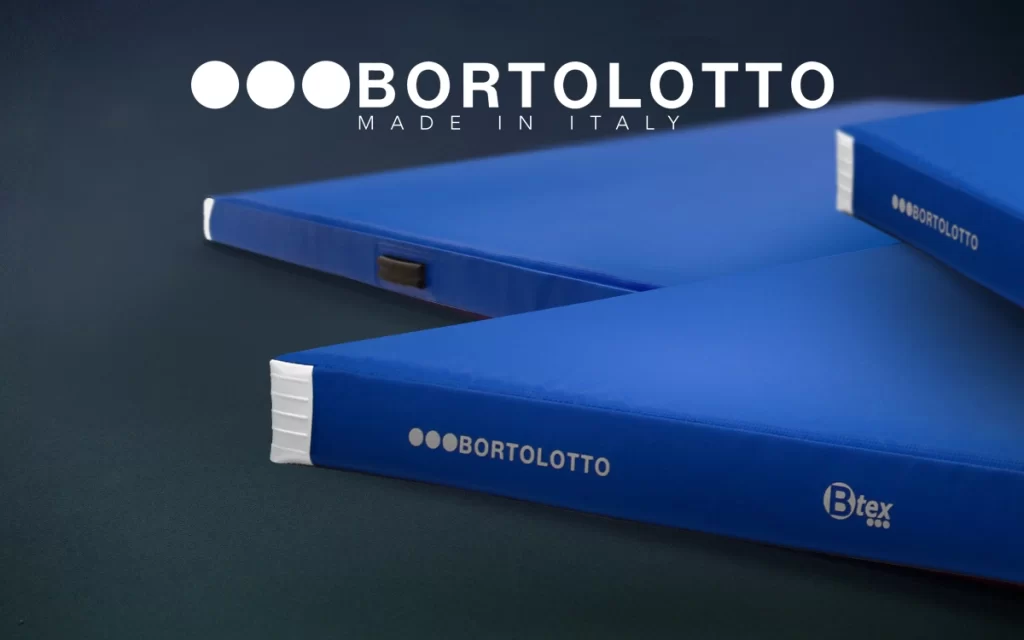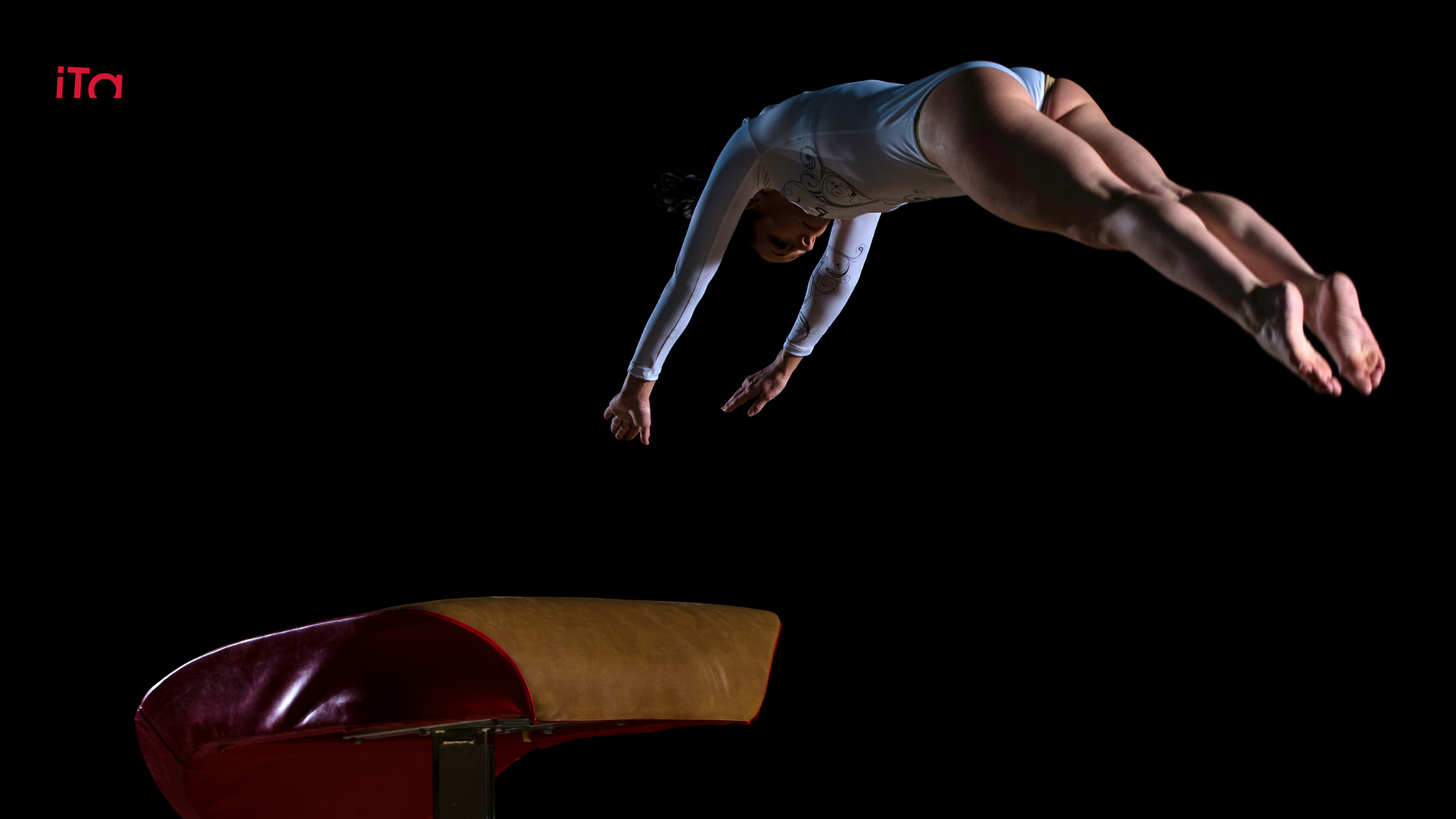Vaulting Artistic Gymnastics: Techniques, Equipment and Safety
The vaulting in artistic gymnastics is one of the most fascinating and dynamic specialties of this discipline. It combines power, speed, precision and control in an execution that lasts a few seconds but requires years of preparation. Whether it is international competitions or training in the gym, vaulting represents a true test of coordination and determination for gymnasts of all levels.
This guide is designed for those who want to delve deeper into every aspect of vaulting: from the technique to the structure of the equipment, up to the importance of mattresses and safety. Through a detailed analysis and the support of the experience of iTatami, a leader in the production of professional sports equipment and mattresses, we will discover why vaulting is a key component in Men's and women's artistic gymnastics.
If you are an athlete, a technician or a sports centre manager, here you will find useful information to train and equip the vaulting area in the best possible way, always guaranteeing high performance and protection for athletes.
Content index
What is Vaulting in Artistic Gymnastics?
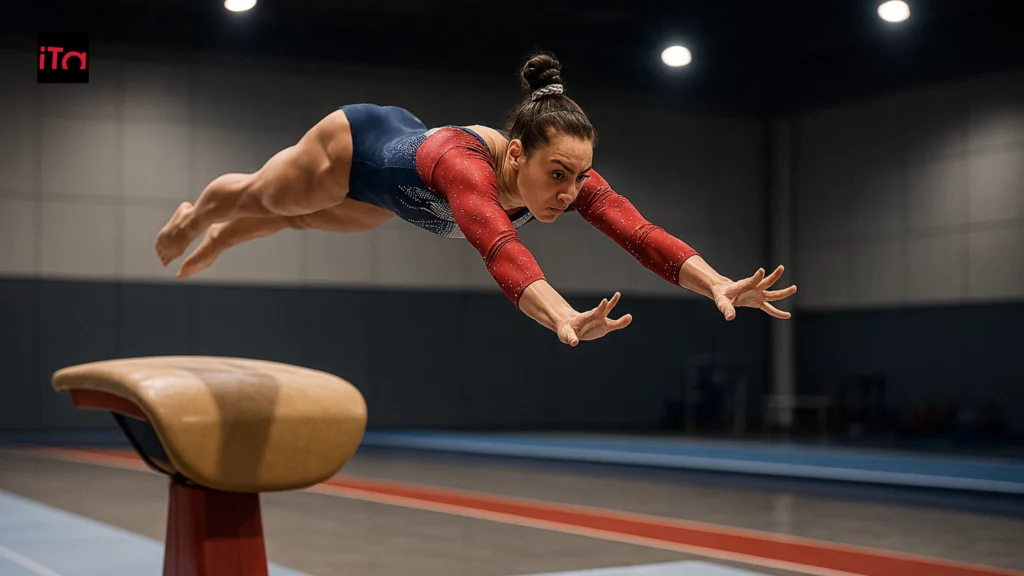
The vaulting in artistic gymnastics It is a dynamic and spectacular discipline that requires explosiveness, technical precision and body control. The exercise consists of a run on a platform followed by a jump on a hitting board and a push on the apparatus (the so-called vaulting horse), ending with a landing on a mattress.
This discipline tests the coordination between speed and strength, and is often one of the most appreciated elements in artistic gymnastics competitions, both at amateur and professional level.
Male and Female: What's the Difference?
In the women's vaulting, gymnasts focus on power and rotation figures, often in sequence with other gymnastics events (such as uneven bars or balance beam).
In the men's vault, the emphasis is similar but falls within a different race path, in combination with disciplines such as rings, pommel horse And bar.
Vaulting, Pommel Horse and Horse: The Terminologies
The terms “horse vaulting”, “leapfrog” or “leapfrog gymnastics” are often used interchangeably to refer to the apparatus or the exercise itself. However, in modern artistic gymnastics one correctly speaks of vaulting board or vaulting table, more ergonomic than the traditional horse.
This tool has been designed to ensure maximum safety and performance for athletes, supporting complex rotations and landings thanks to the use of professional mattresses and high-density cushioning systems.
The Vaulting Apparatus: Features and Dimensions
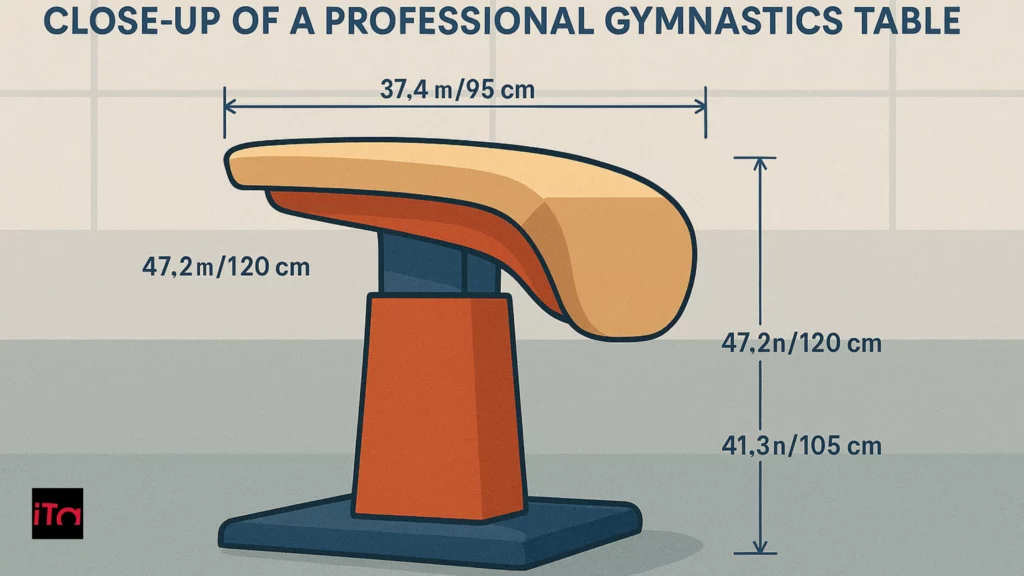
The protagonist of the vaulting is the so-called vaulting horse, a fundamental tool in the artistic gymnastics, both male and female. Unlike the traditional version used until the 2000s, today a modern vaulting board is used, designed to improve the safety and performance of athletes.
Structure and Design
The vaulting horse has a wider and more arched shape than the others artistic gymnastics equipment, to facilitate pushing and rotations. The upper surface is covered with non-slip and shock-absorbing materials, while the base is height-adjustable to suit the needs of each athlete.
The official dimensions according to the FIG (International Gymnastics Federation) are:
- Height: 125 cm from the ground
- Length: 120 cm
- Length: 95 cm
Vaulting Horse vs Other Apparatus
Unlike the leapfrog gymnastics, often used in school or amateur contexts, the vaulting horse is designed to support complex evolutions at high speed. Even compared to the pommel horse of men's artistic gymnastics, this tool stands out for its function and construction.
It is important that each sports center carefully selects not only the horse, but also the entire set of artistic gymnastics equipment based on the discipline practiced and the level of the athletes. Find out more in the complete guide to artistic gymnastics equipment.
The Technical Phases of Vaulting
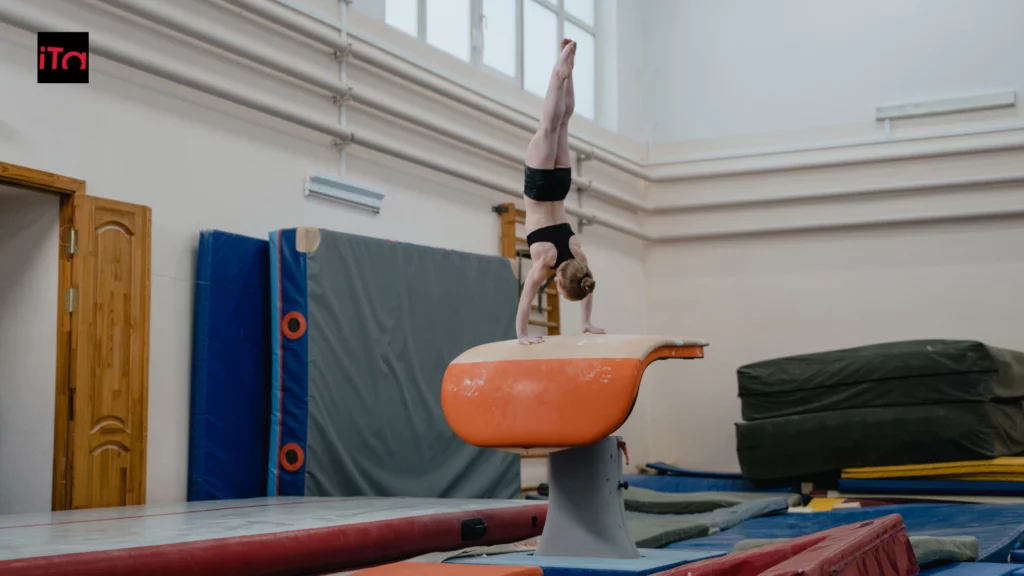
The vaulting in artistic gymnastics It is one of the most spectacular disciplines, but also one of the most complex to perform correctly. Each execution is composed of well-defined phases, each of which requires control, precision and explosive strength. Let's look at them in detail:
1. Approach and run-up
The athlete begins with a linear and controlled run-up on the track, which can vary from 20 to 25 meters. The speed acquired in this phase is fundamental: the greater the push in running, the greater the potential for elevation and subsequent rotation.
2. Hit and push on the platform
The run-up ends with a powerful leap on the beaten platform, an elastic surface that returns vertical energy to the athlete. It is at this moment that the elevation necessary to correctly tackle the pommel horse is built. The timing and precision of the jump are crucial.
3. Vaulting on the horse
This is the central phase, where the interaction with the tool takes place. The hands rest on the vaulting horse, and the athlete performs an acrobatic movement in the air: rotations, twists and body movements that vary according to the difficulty of the exercise. The horse is not just a support, but a tool to project the body upwards.
4. Landing
Once the rotation is completed, the athlete prepares the descent and tries to land in a stable manner, maintaining control of the body and assuming a correct position (knees slightly bent, torso erect, feet together). Thesafe landing It is also one of the main evaluation criteria in competitions.
5. Artistic gymnastics positions in vaulting
During the vault, the athlete can perform different technical positions Classics of artistic gymnastics:
- Carpito group: body bent forward.
- Collected group: legs bent to the chest.
- Tense group: body in a straight line.
These positions, if performed with cleanliness and symmetry, increase the value of the exercise.
Other Related Equipment in Artistic Gymnastics
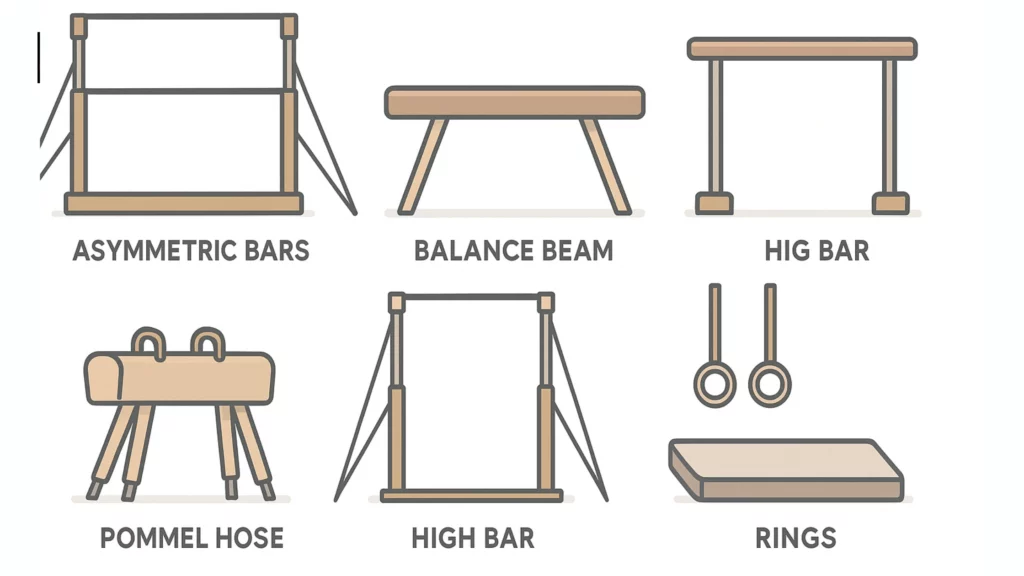
In addition to vaulting, artistic gymnastics is composed of a series of apparatuses that contribute to the development of different skills: strength, balance, coordination, mobility and control. Each apparatus poses specific technical challenges and is regulated by international standards in terms of structure, materials and dimensions.
Uneven bars
Used exclusively in the women's sector, the asymmetric parallel bars allow a combination of swings, rotations and passages between the two bars at different heights. They require excellent coordination and core strength. They are one of the most spectacular exercises in women's artistic gymnastics.
Bar
In the Men's artistic gymnastics, the barre is one of the main tools. The barre executions include great swings, 360° rotations, acrobatic exits and airborne recovery. The barre is a highly technical and adrenaline-filled exercise.
Rings
Among the most challenging tools in men's gymnastics we find the rings, which require great static strength and control. The athlete must maintain isometric positions (such as the cross or the square), perform swings and conclude with an acrobatic and controlled exit.
Beam
There balance beam It is a women's specialty that measures only 10 cm wide. On this narrow surface, jumps, turns, acrobatics and choreographic steps are performed. The difficulty lies not only in the technical exercise, but also in the management of balance, concentration and grace.
Many people wonder what the regulation width of the beam: it is exactly 10 cm, while the standard length is 5 meters.
Horse with pommels
Used in men's gymnastics, the pommel horse It requires continuous cyclical movements, where the athlete performs sweeps and passes on the handles and the central body of the apparatus. It is an exercise that tests endurance and rhythmic control.
Every piece of equipment needs an adequate support base and landing surfaces designed to ensure the safety of athletes, especially when landing or exiting. This is why it is essential to equip each training area with specific mattresses for artistic gymnastics, made with certified and resistant materials.
To find out how the best gymnastics mattresses are made in Italy, visit our overview on sports mattresses made in Italy.
Vaulting Safety: Cushioning Mattresses and Surfaces
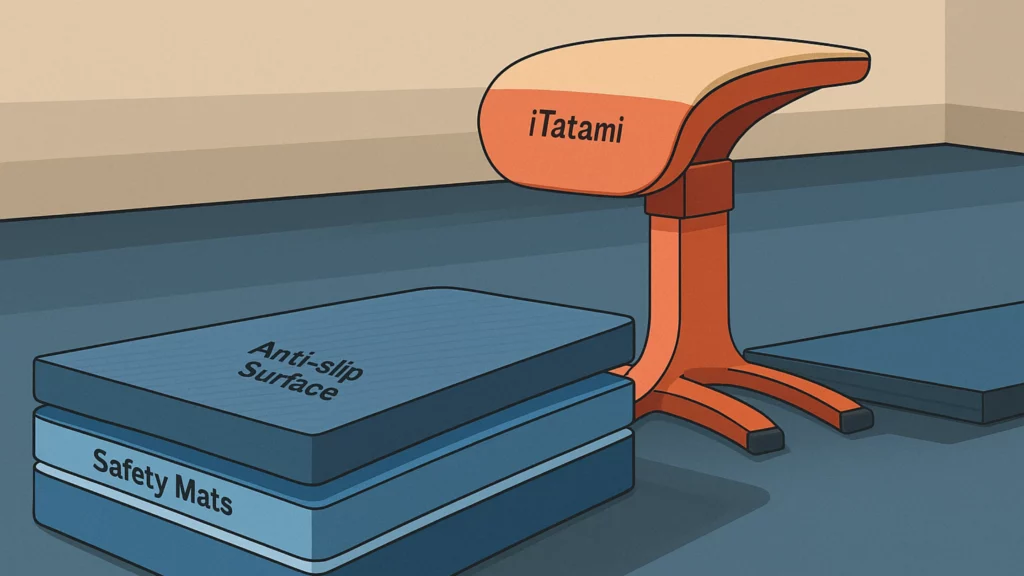
The vaulting in artistic gymnastics is one of the most spectacular disciplines, but also among the riskiest in terms of physical impact. The fast run-up, the push on the board and the flight phase culminate in a landing that must take place in complete safety. For this reason, Choosing the right mattresses is not a secondary detail, but an essential component for every sports center.
Why Mats Are Essential in Vaulting
When landing, the athlete releases a high force onto the ground. Without an adequately cushioned surface, the risks of joint injuries, slips and unbalanced falls increase. A professional mattress for artistic gymnastics must therefore offer:
- High impact absorption, to protect knees, ankles and back.
- Non-slip surface, to avoid unexpected movements during the landing phase.
- Dimensional stability, to ensure a uniform base over the entire area.
Recommended Mattress Types for Vaulting
To properly absorb the kinetic energy produced during the jump, it is essential to choose mattresses with:
- Appropriate thickness: usually between 20 and 30 cm, depending on the training level and the height of the jumps.
- Calibrated density: an internal foam that can cushion but also support the athlete's weight, without excessive rebound effect.
- Certified and resistant materials, such as those used in iTatami mattresses, produced in Italy and designed specifically for gymnastics.
The use of professional mattresses is essential not only for the vaulting, but also for tools such as parallel bars, beam, pommel horse, bar and rings, where exits must be performed with control and safety.
For an in-depth guide to choosing the ideal mattress for each piece of artistic gymnastics equipment, we recommend reading our Complete guide to choosing gymnastics mats.
Why Vaulting Is a Complete and Fascinating Exercise
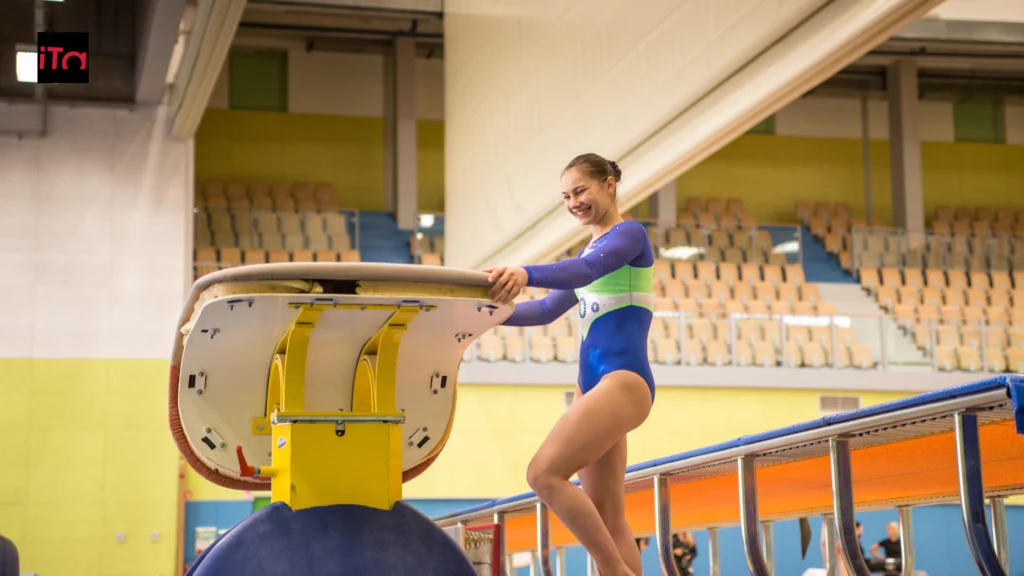
The vaulting in artistic gymnastics represents one of the most intense and spectacular tests of the discipline. It unites explosive force, motor coordination, speed of execution And technical precision in a single sequence. Each phase – from the run-up to the landing – tests the athlete's athletic and mental abilities, who must make rapid, powerful and at the same time controlled movements.
But to make the most of this discipline, it is essential ensure a safe and professional training environment. The use of high quality sports mattresses, designed to absorb impacts and support every phase of the exercise, is an essential condition for practicing vaulting in complete safety, both at an amateur and competitive level.
For over 50 years, iTatami has supported gyms, sports centers and gymnastics schools with equipment and mattresses designed and produced entirely in Italy, capable of meeting the highest standards in terms of performance and durability.
👉 If you are designing or updating your workout area, discover the complete range of mats and equipment for artistic gymnastics signed iTatami: safety, quality and innovation for every need.
🔗 Consult the iTatami catalogue and take your gym to the next level.
FAQ – Frequently Asked Questions about Vaulting in Artistic Gymnastics
Vaulting is a discipline of artistic gymnastics in which the athlete runs along a runway, forcefully breaks away from a beaten board, and uses a tool called a horse to perform an acrobatic jump and land on a mat. It requires speed, power, technique, and coordination.
The regulatory measurements of the vaulting horse are: 125 cm height from the ground, 120 cm long And 95 cm wideThe tool is covered with non-slip materials and has an ergonomic shape to ensure safety and fluidity in execution.
Yes. Vaulting is present in both men's and women's artistic gymnastics. While women compete on apparatus such as the balance beam and uneven bars, men include vaulting in their program along with rings, pommel horse, high bar, and other apparatus.
The leapfrog is a term often used in school or recreational contexts to indicate a similar exercise, but much simpler and with different equipment. The vault in artistic gymnastics, on the other hand, is a technical and regulated discipline, with complex acrobatic movements, evaluated by a jury according to precise criteria.
The ideal mattresses for vaulting must have high impact absorption capacity, non-slip surface And certified materials. iTatami mattresses, made in Italy, are designed to offer maximum safety and resistance, both in training and in competition. Discover our Complete guide to choosing gymnastics mats.


